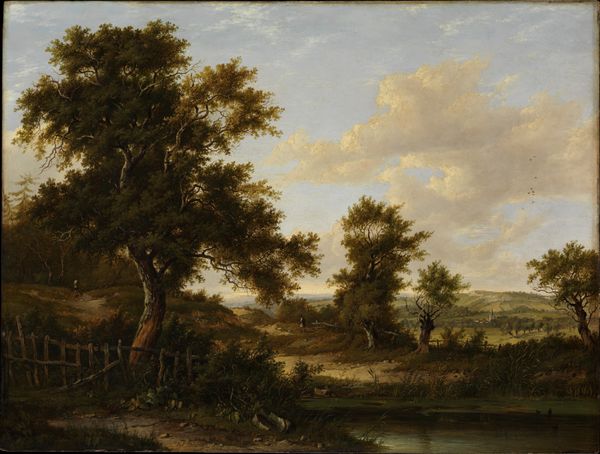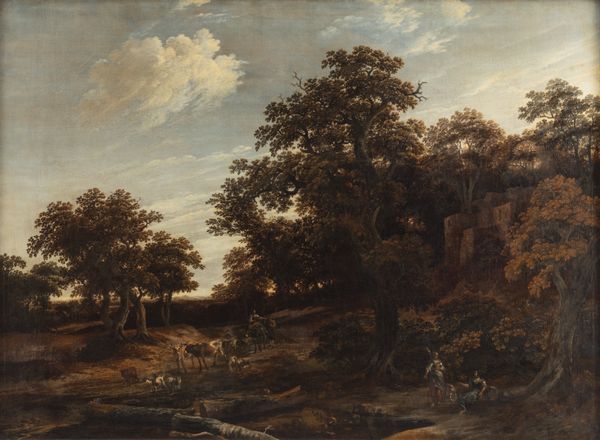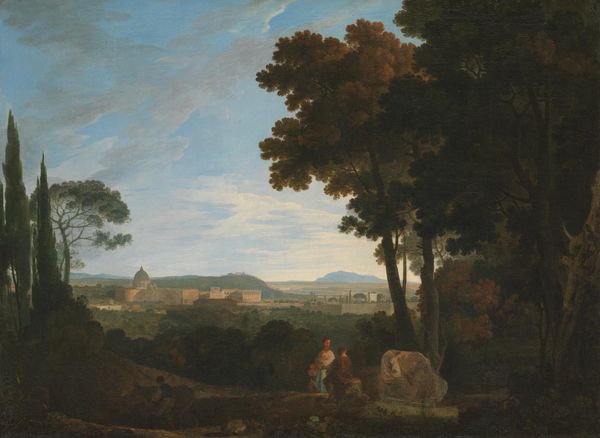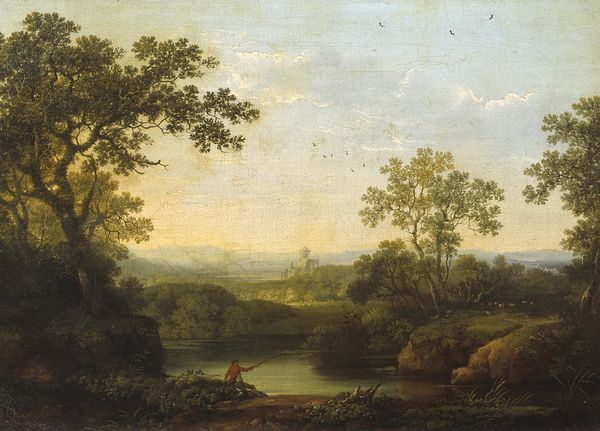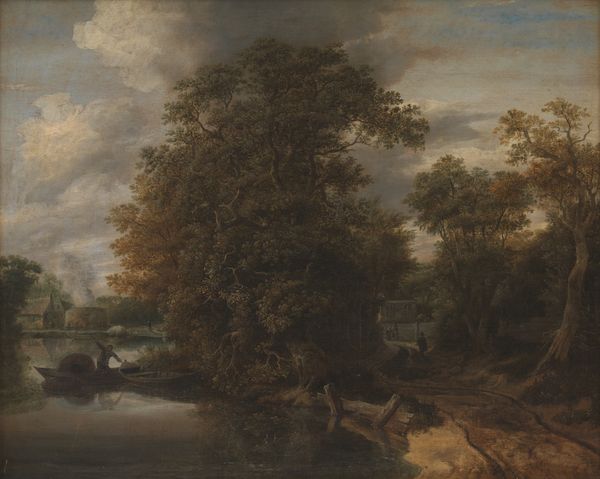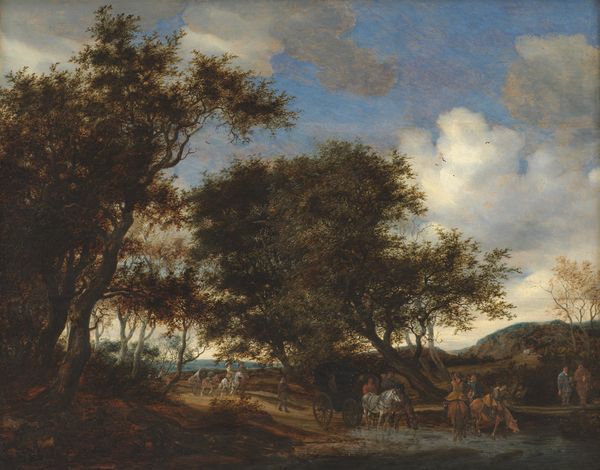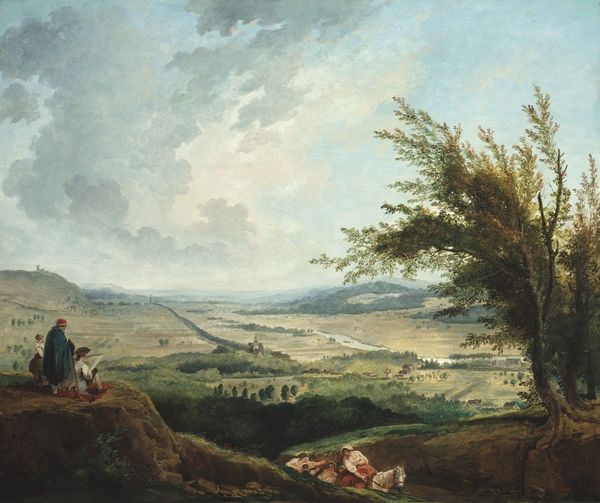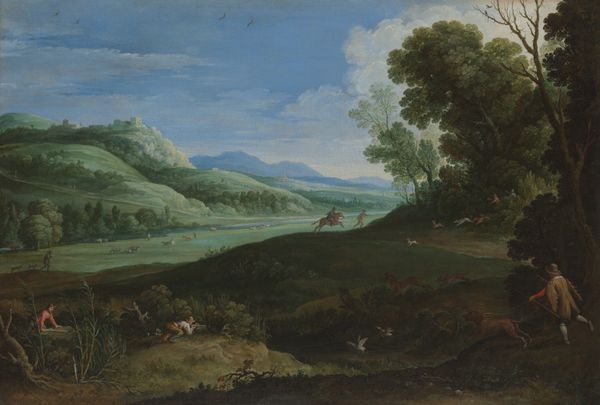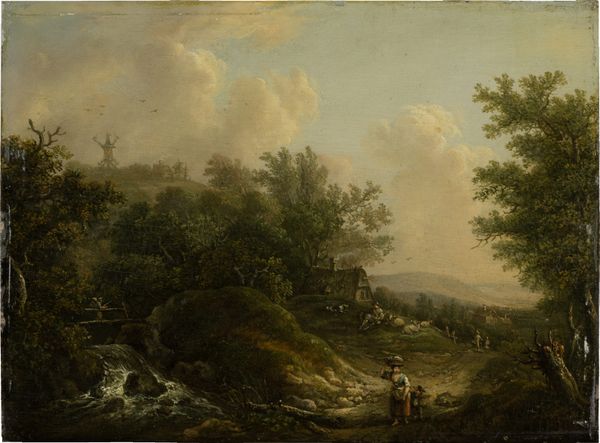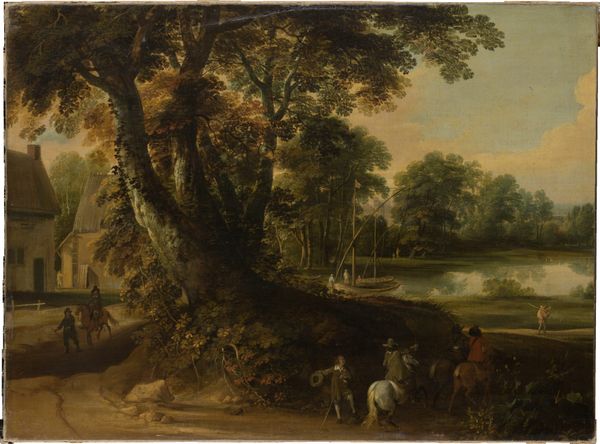
painting, oil-paint
#
dutch-golden-age
#
painting
#
oil-paint
#
landscape
#
oil painting
#
genre-painting
#
realism
Dimensions: height 138 cm, width 164.5 cm, depth 9 cm
Copyright: Rijks Museum: Open Domain
Editor: Philips Koninck's "The Entrance to the Woods," painted sometime between 1650 and 1688. It's an oil painting, currently hanging here at the Rijksmuseum. I'm immediately drawn to the way the trees frame the expansive landscape, creating a sense of depth. It's peaceful, but with a hint of something mysterious hidden in the woods. How do you interpret this work? Curator: The "entrance," as you say, is crucial. Note how the woods, rendered in detail, offer an invitation, a threshold. But to what? For me, this painting functions as a mirror reflecting Dutch society’s relationship with the land, especially considering the time. The trees, almost protective, oversee a vastness representative of both possibility and vulnerability. Editor: Vulnerability? I see openness more than vulnerability. Curator: Precisely. It *seems* open, inviting settlement and cultivation. Yet, consider the Dutch landscape at the time. Reclaimed land. Windmills, which stand as a testament to humankind conquering the elements, also serve as symbols of continuous labor against the very real threat of nature reclaiming its territory. What emotional tone do you feel? Editor: Hmm, a balance. The expansive vista conveys prosperity, but the earthy foreground...the slightly claustrophobic trees, offer that tinge of uncertainty? The painting has an emotional ambiguity I hadn’t initially appreciated. Is that tension between the domestic and the wild, do you think, what makes it resonate? Curator: Indeed. And don’t overlook those figures - small, almost swallowed by the vastness, they highlight humankind’s tenuous position. Remember, every image, especially in this era, is a conscious decision loaded with symbolic potential. It is that cultural memory echoing from that period and perhaps resonating subconsciously now. Editor: That tension…it gives a new depth to how I see these landscapes. It's no longer just scenery but a complex expression of a people and their place. Thanks!
Comments
rijksmuseum about 2 years ago
⋮
A vast watery view dotted with numerous mills – at first sight this is a typical Dutch landscape. The purplish mountains on the horizon, however, sooner recall Italy. To convey the wide panorama, Philips Koninck – a pupil of Rembrandt – adopted a high vantage point. In the foreground he placed some majestic trees rendered in a brownish-green impasto. Farther back, a meandering river leads the eye into the distance dominated by cooler colours.
Join the conversation
Join millions of artists and users on Artera today and experience the ultimate creative platform.
